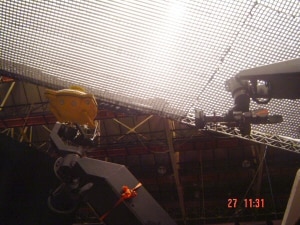The Life Aquatic For Milo
The Life Aquatic For Milo
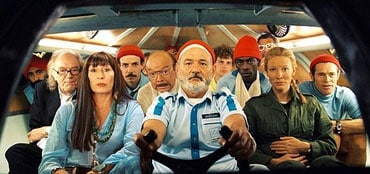 |
A recent Disney Picture starring Bill Murray and Cate Blanchett featured several shots created with a couple of Milo motion control systems, supplied and operated by Motion Control Cameras, UK. The Life Aquatic is Wes Anderson’s (The Royal Tannenbaums, Rushmore) latest creation. The film which was shot in Italy in the Mediterranean, features Steve Zissou (Bill Murray) as an internationally acclaimed oceanographer who sets sail on an expedition to track down the elusive and possibly non-existent Jaguar Shark. Various complications on the way include kidnappings, pirates and bankruptcy make this a wild comedy adventure. To achieve his vision Wes called on well-known Visual Effects DoP Eric Swenson (Constantine, X-Men II, Blade) to create a feast for the senses.
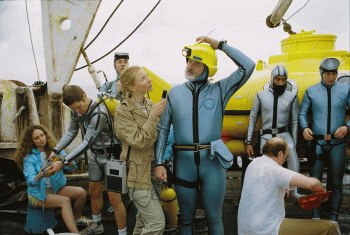
Director Wes’s approach to any shot is to try as much as possible to see it happen in front of the camera, so using motion control, the underwater submarine was shot in a fantastical underwater world that Steve travels in his yellow submarine. ‘Motion Control Cameras’ used the two large Milo motion control rigs, their own and a loaner from Lumiq Studios – one for the camera and one as a model mover carrying the 30inch sub model on the head. The camera rig required the use of their Wotan 30ft arm in order to push across the landscape.
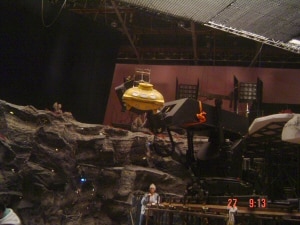 |
Swenson then used multiple exposures to create what they termed “a smashed together” in-camera composition so that Anderson could get an idea of what the final shot would look like on set. The crew shooting the miniature submarine spent two weeks shooting around 19 different passes per shot, working on a huge motion-control set which was 60ft. wide with a 3ft. long submarine miniature. Tracking out from the sub as it dives into a gorge then tracking in as it comes to rest, motion control operator Ben Goldschmied triggered both rigs from an event controller. “Knowing what to expect of Lumiq’s Milo was an advantage, both rigs linked easily even running passes at different camera speeds, some as low as 0.062 fps. I knew that the delays in both Mark Roberts’ systems would be the same, and by using a dummy camera in the sub’s Milo, that their prerolls would also be the same regardless of the camera speed” says Ben. “And having full control of the curves in the Flair programming software immediately gave the sub’s movement a real underwater feeling.” “At one stage during the shoot, Wes came on set (an unusual event as he was filming in the Med every day) and we showed him a move as the sub is nudged by this huge shark. He commented that he felt the move needed to be 20% larger for the initial impact. I was able to affect this change in a matter of seconds and get approval of the move before he left the stage!”
Shooting the sub required MoCo passes with the sub’s lights turned on as well as off because the sub’s lighting interacts with the ground it lands on. As the sub reached the ocean floor, these lights reflected off an underwater river made of a Mylar-type material, giving an eye-catching look. Then multiple passes were shot to create different types of ripples going across the river at different speeds. Then enhancement passes to make the river more obvious. They also created a matte for the sub itself that allowed them to isolate the miniature and do corrections on it later. Several passes were required to get the right look on the underwater 4ft. to 8ft large-scale miniature volcanoes.
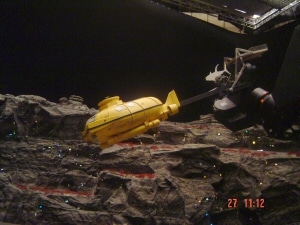 |
The smoke – created in a cloud tank – would be added later, but the crew had to capture “a volcano glow pass” on-set. They backlit the volcanoes to give them more shape. Once these clean passes were accomplished, they turned on smoke to create a sense of underwater volume and lots of it. A smoke pass was needed for every one of the passes except for the ones with the sub’s lights turned on. Because smoke adds volume to the lights but not a sense of the particulate matter in ocean water, several passes were shot against black using silver and gold glitter in water. Those would be used in post to track particulate matter into the light beams coming from the sub.
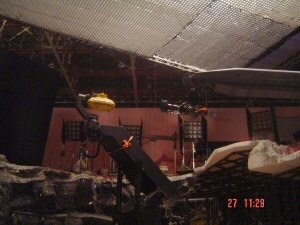 |
Then began the month-long compositing process of weaving these elements together by tracking the submarine using RealViz’s MatchMover software to make this world believable. Swenson stated “Pretty much what you see on film was what was in front of the camera. We put Milo through hoops to get what we wanted and it did a great job. It performed well and produced everything that was required of it with all passes repeating precisely”
